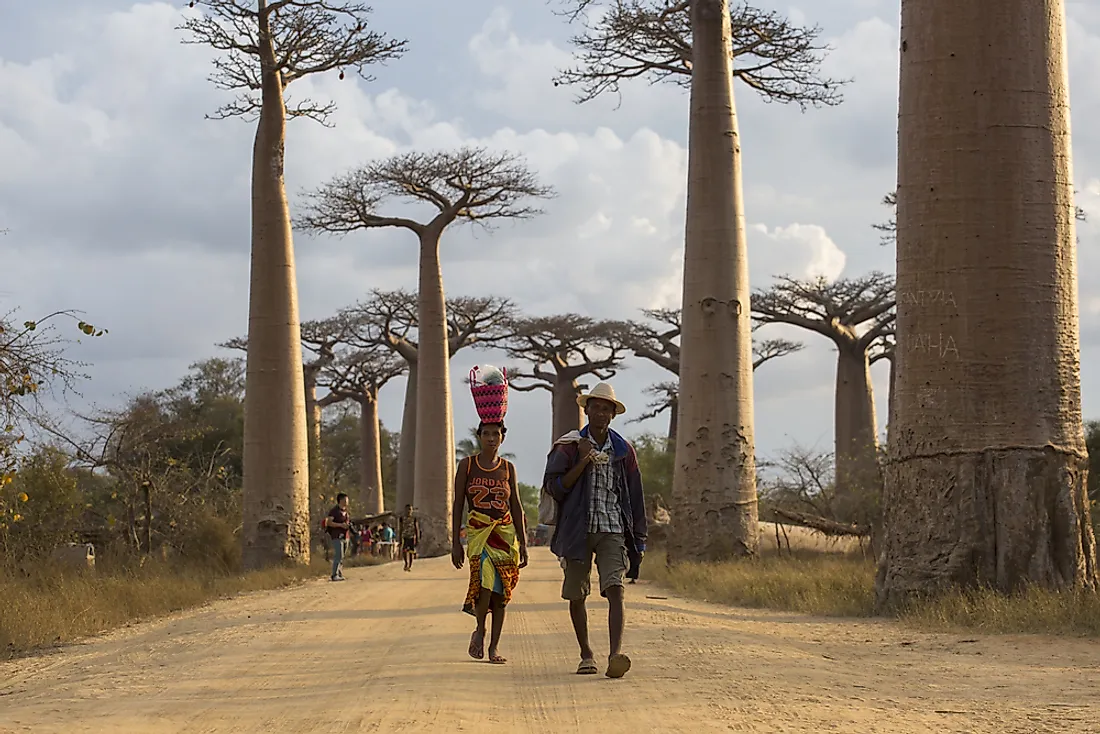Ethnic Groups Of Madagascar

More than nine-tenths of the population in Madagascar is Malagasy, comprising of about 20 ethnic groups and Merina is the dominant group. All these ethnic groups have different cultures, norms, and religious beliefs. The cultural and religious background of the various tribes rotates around the worship of ancestors and sees them as intermediaries between God and the living. It is hard to declare strict regional boundaries for each tribal group as they keep moving and interacting with each other.
Ethnic Groups Of Madagascar
Merina
They are people of dominant highlands and they form 26% of the whole population of Madagascar. They emerged as a politically dominant group in the course of the 17th to the 18th century. They captured non-Merinas and forced them into slavery, and later replaced them with imported slaves from East Africa by 1850. The British missionaries converted the Merina upper-class members to Protestants in the 19th century. Dominion of Merina Kingdom came to an end with the first Franco-Hora War of 1883-1885, and Merina language became the national language. Merina had three different classes comprised of the Andriana who are nobles, the Horas who are free men, and the Andero who were slaves. Their stable food is rice and they circumcise boys after seven years where relatives request for blessing and protection from ancestors. They bury their dead in family tombs located in ancestral villages.
Betsimisaraka
They are the inhabitants of east central and northern coast of Madagascar and constitute 15% of the total population. They speak a dialect of Malagasy. Moreover, they are inseparable multitudes where they live along the narrow eastern coastal strip thus were able to interact with African Bantu and Asians of astroasian descent. The Betsimisaraka kingdom was founded in early 18th century by Ratsimilao which united various chiefdoms along 400 miles. The kingdom collapsed after the death of the dynasty's third ruler in 1791. They then fell under the rule of the expanding Merina to the West until the advent of colonial rule in 1890s. They are historically reputed as skilled sailors and pirates. They believe in sorcery and a wide range of supernatural forces involving respect for ancestors, spirit possession, ritual sacrifice of zebu and patriarchal social structure. They practice reburial (famadihana) and circumcision (sambatra). Most taboos and folktales revolve around lemurs and crocodiles.
Betsileo
They began as an administrative subdivision in the 19th century. They were a highland ethnic group and are the third largest group of the population of Madagascar constituting 12% of the total population. Betsileo means 'invincible.' They were once occupants of the southern part of Madagascar plateau and organized into kingdoms of Fandriana, Fisakana, Manandriana, Isandra which existed independently. Randama conquered and reorganized the kingdoms turning most of them into slaves and trading others to the Europeans. They claim a common heritage with Antemoro from the east coast. They live in huts made of wood and some vegetative fiber which have changed to mud and bricks. They believed in diviners and astrologists who set dates for ceremonies and witch doctors who manipulate the magic.
Tsimihety
Their settlement in Madagascar dates back to the 16th century, and they descend from immigrants from the east coast villages of Betsimisaraka who fled the Merina rule. When a Tsimihety dies and is far from their homeland, they bury him in the land of death and later exhume the body and bring it to their native land, put it in a new coffin and burn the old one. Their music is called Malesa; they dance in an easy way with a man behind a woman. Unlike other tribes the Tsimihety have their unique marriage customs and traditional music. They rarely recognize authority. The Tsimihety are animists, believing in a supreme being who presides over the spirit world inhabited by their ancestors, and perform rituals, offerings and adhere to a strict system of taboos.
Historical Demographics Of Madagascar
To fully understand the character of Madagascar's population and their historical development, we need to appreciate the inhabitant's common characteristics including language and kinship structure, as well as the divisions based on geographical regions. Among other ethnic groups that exist in Madagascar is Sahara and antandroy though they form the smaller percentages of the total population. These ethnic divisions correspond with the major geographical divisions of the island. Within these regions, the people have certain cultural similarities accentuated by the natural environment.
Ethnic Groups Of Madagascar
| Rank | Ethnic Group or Nationality | Share of Population of Madagascar |
| 1 | Merina | 26% |
| 2 | Betsimisaraka | 15% |
| 3 | Betsileo | 12% |
| 4 | Tsimihety | 7% |
| 5 | Sakalava | 6% |
| 6 | Antaisaka | 5% |
| 7 | Antandroy | 5% |
| South Asians, East Asians, Arabs, French, and Others | 24% |











